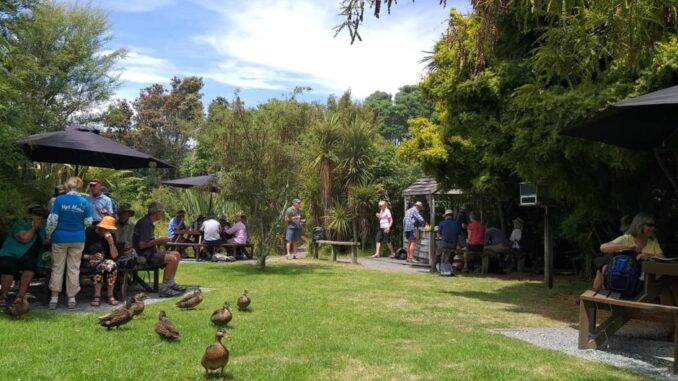
By Ian Powell
Good initiatives can benefit more than just their immediate objective. Promoting tourism on the Kāpiti Coast is a case in point. It has flow-on effects for the Coast’s economic, interconnectivity between its towns and villages, and making the Coast more exciting for the young. Consequently, if elected as a KCDC districtwide councillor, I will be supporting moves to develop a sustainable tourist strategy for Kāpiti.
Earlier this year KCDC’s economic development board (Kotahitanga) established the Tourism Advisory Board (TAB). This was very good initiative. TAB’s role is to develop and implement a tourism plan for the Kāpiti Coast. To do this well it will need to develop robust partnerships with local and national tourism stakeholders.
Its relationship with KCDC is very direct. It is a relationship that needs to be based on shared purpose and values; relational rather than narrowly contractual. Similarly this should be the relationship with WellingtonNZ given its tourism role for the wider Wellington region. It should go without saying that the Board will need to work closely with Kāpiti businesses, including involving them in the implementation of the tourism plan.
We need a focussed tourism strategy (perhaps including ‘taste of Kāpiti’ tours). Tourism has enormous potential given the nature and beauty of the Coast while recognising the need to be environmentally sensitive and respectful.
The Coast’s nature and beauty is ripe for tourism. It includes Kāpiti Island, the numerous beaches, hiking, biking, nature reserves (Nga Manu), the Ōtaki and Waikanae rivers, Paekākāriki escarpment, parks, picnicking, horse riding, Whareroa Farm, Southwards and the smaller local museums, and rail opportunities such as the QEII Park tram and Steam Incorporated in Paekākāriki. Hopefully the innovative Whale Song project in Paraparaumu might become another opportunity.
A tourism strategy has the benefit of helping boost Kāpiti’s economy, including infrastructure development. Any strategy must include addressing the accommodation shortage, developing town centres, and upgrading (arguably beginning with rivers). Perhaps the strategy could include promoting dog friendly accommodation, given increasing canine popularity?
Along with construction, tourism arguably has the biggest potential to further develop Kāpiti’s employment. In fact, tourism may drive further construction. Increased employment increases income (especially if it is no less than the ‘living wage’) which, in turn, can better enable people to live healthier lives.
A whole-of- Kāpiti tourism strategy can also incentivise the interconnectivity of the Coast with the objective of Kāpiti becoming greater than the sum of its lovely towns and villages. This should include enhancing public transport and cycleways between them.
And, if all is done under the umbrella of a tourism strategy, not only would Kāpiti become a vibrant place for tourists to come; it would also become a vibrant place for young people to either come to or remain in Kāpiti.
Ian Powell is standing as a Districtwide candidate for the Kāpiti Council






